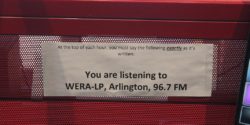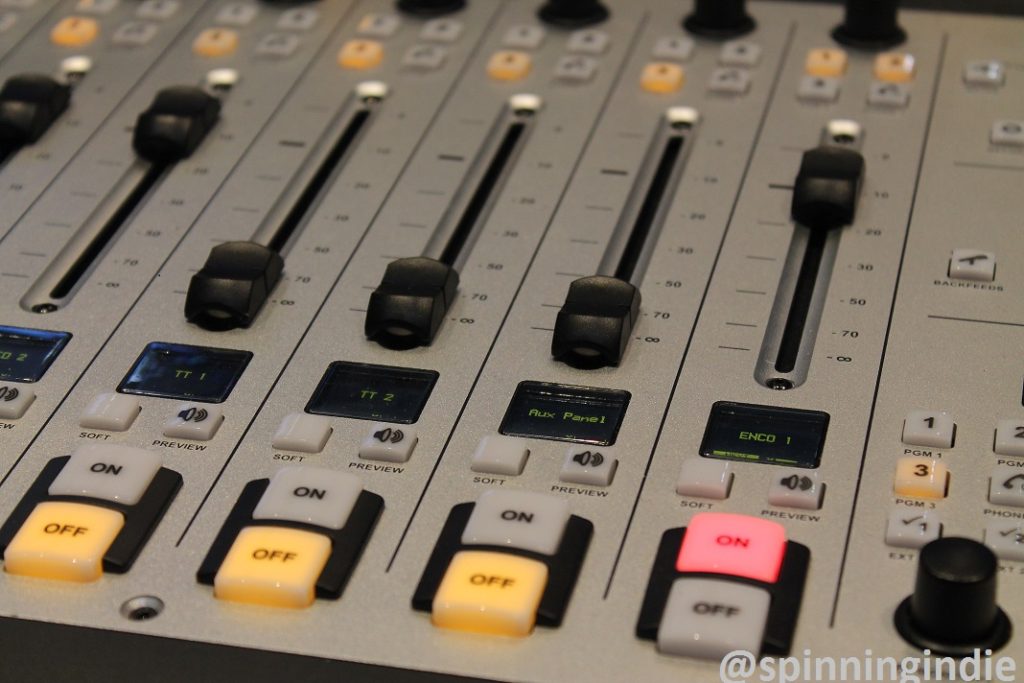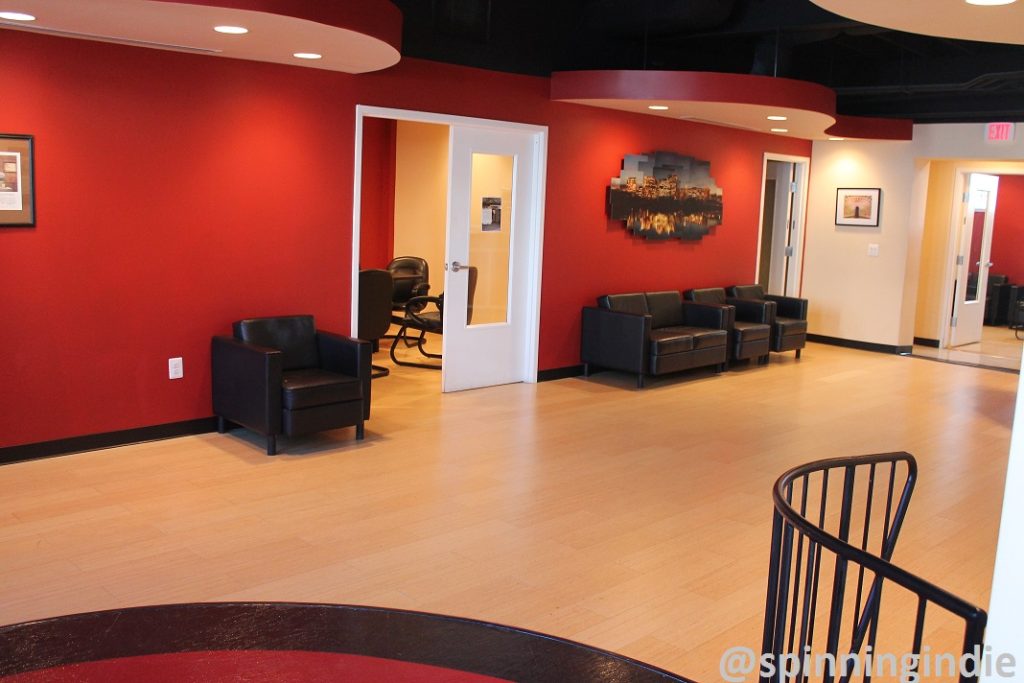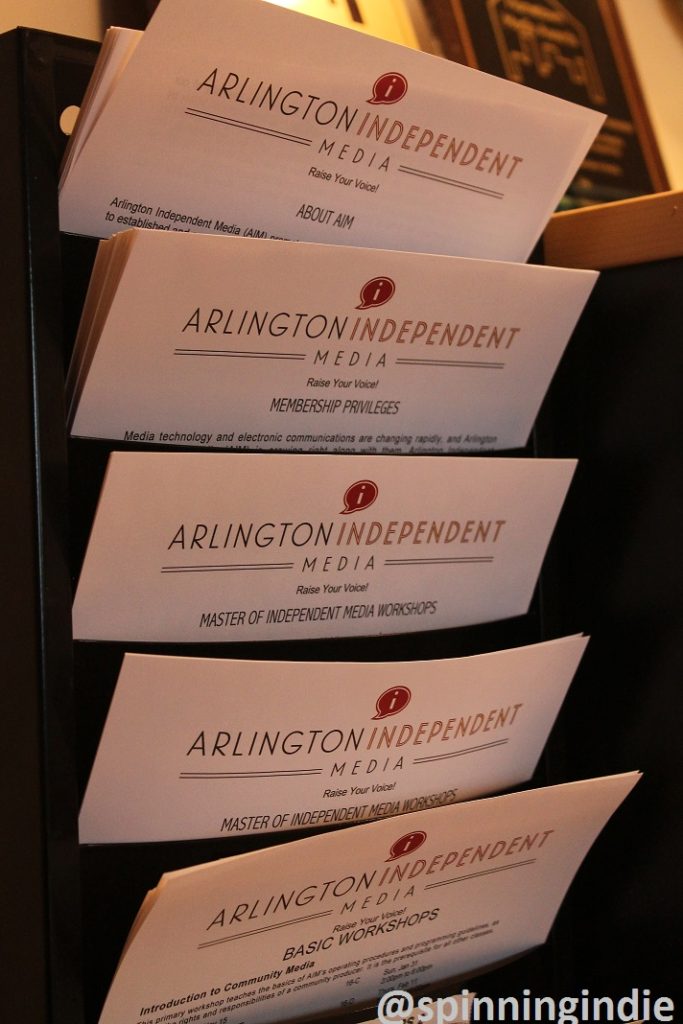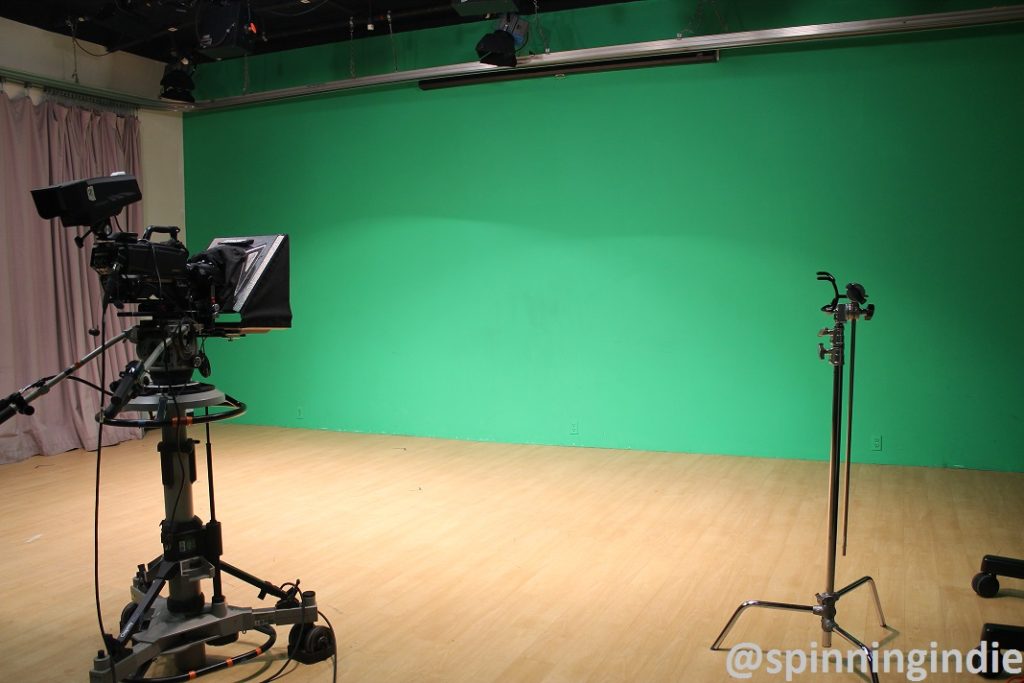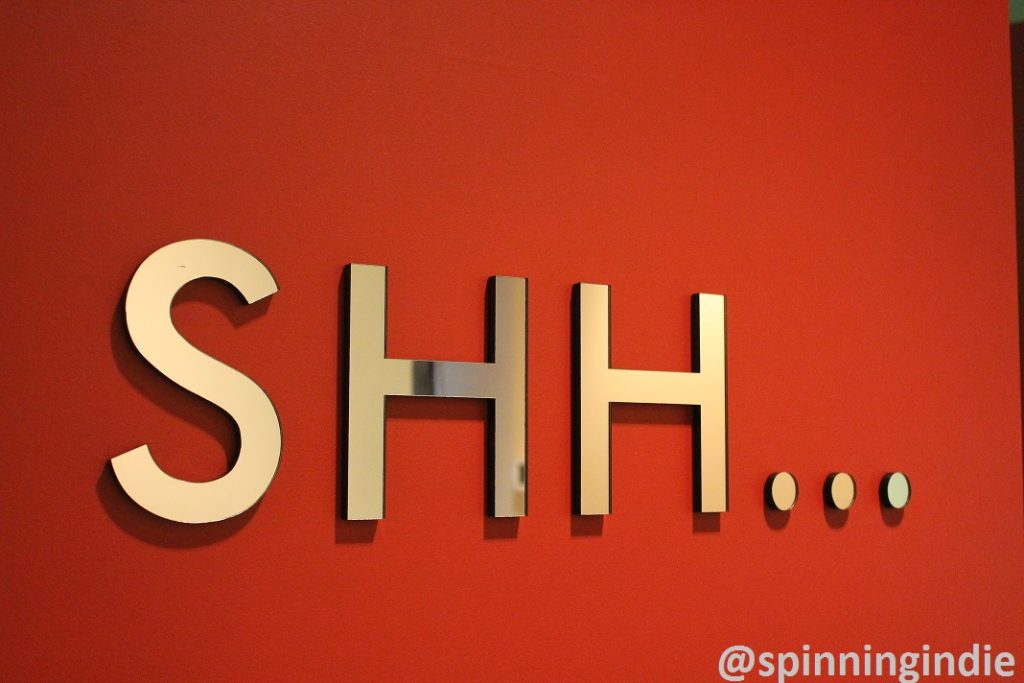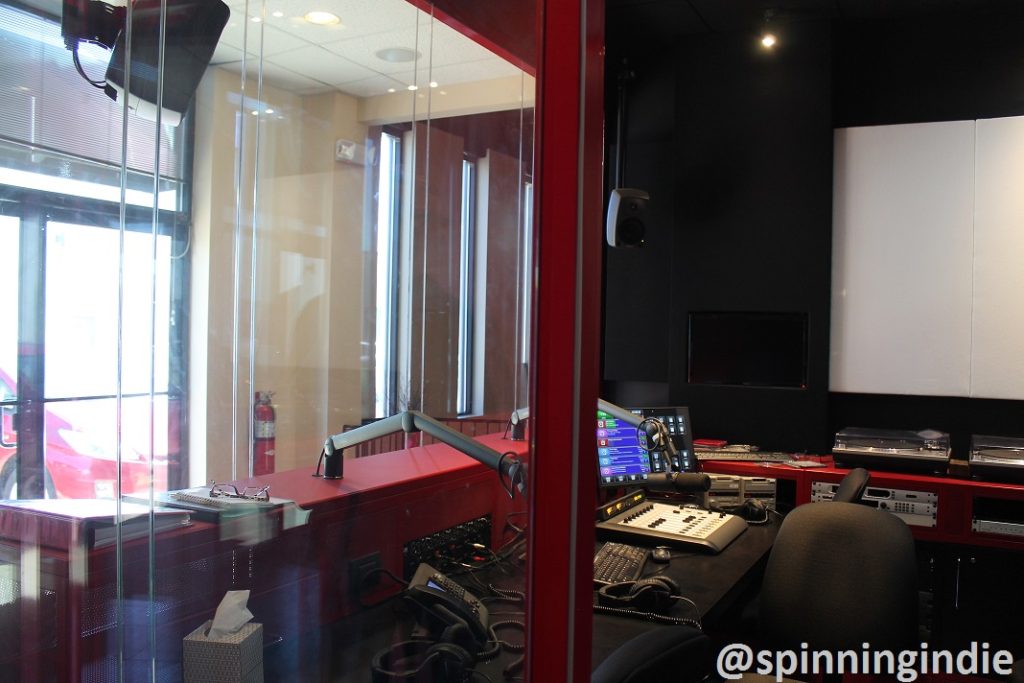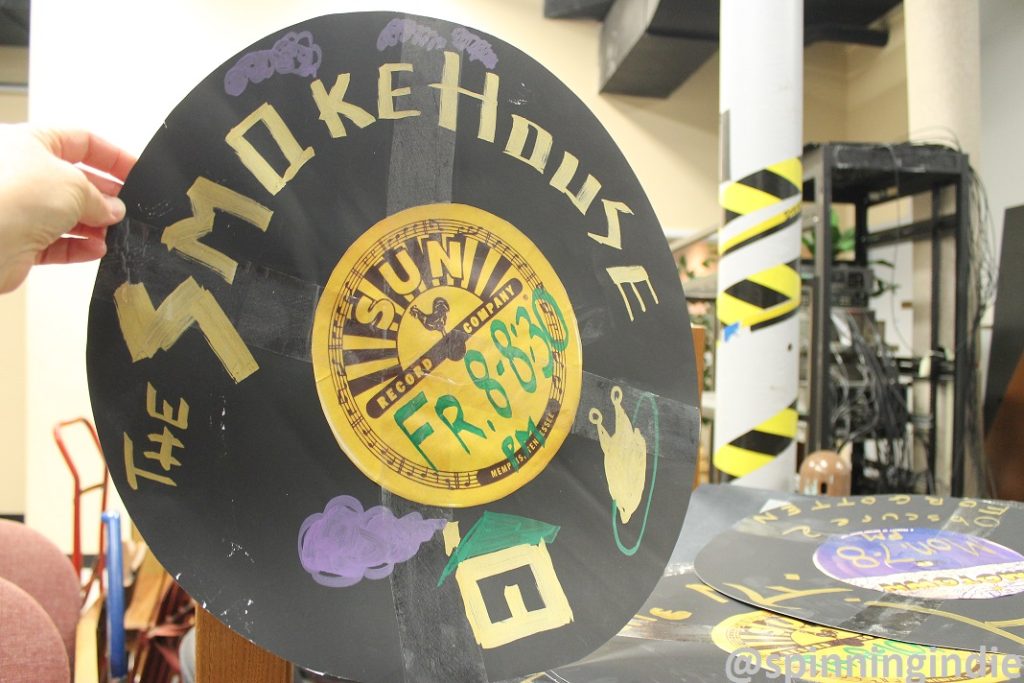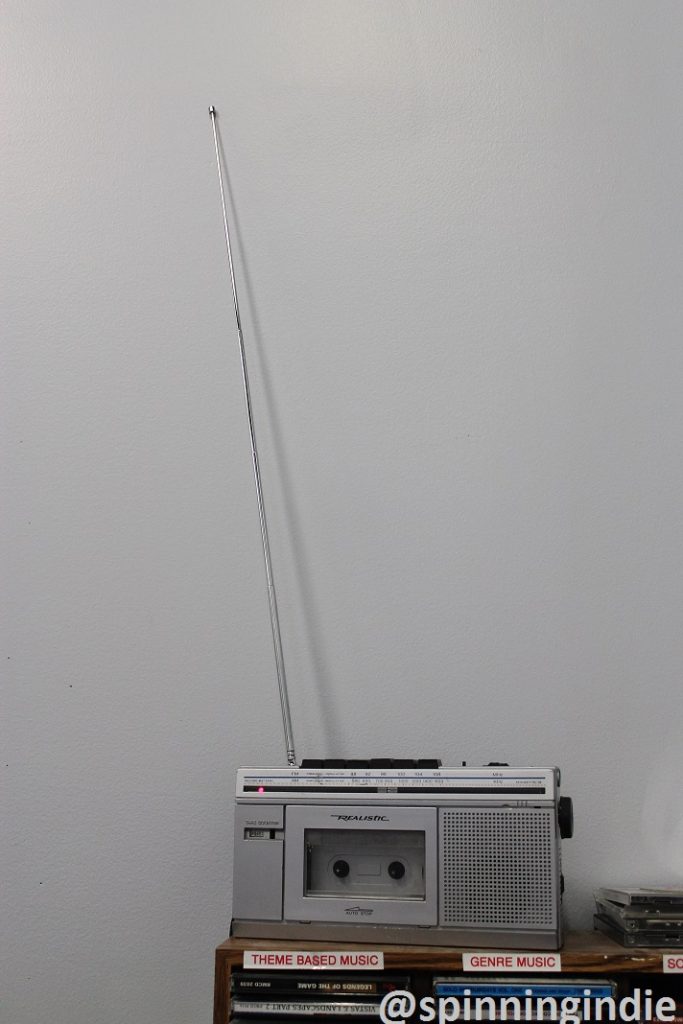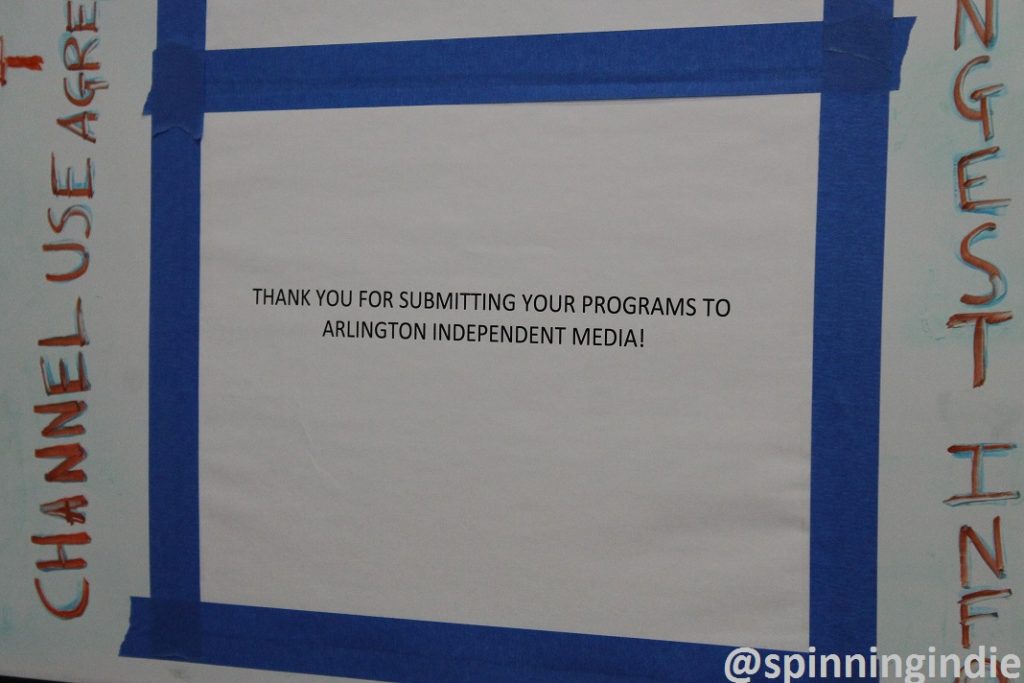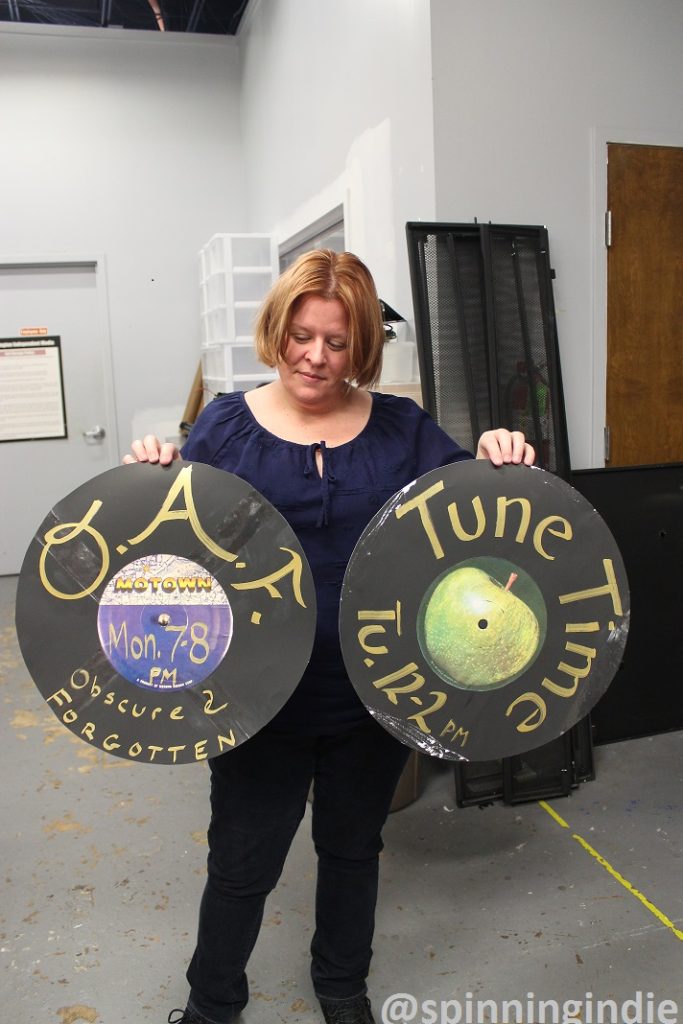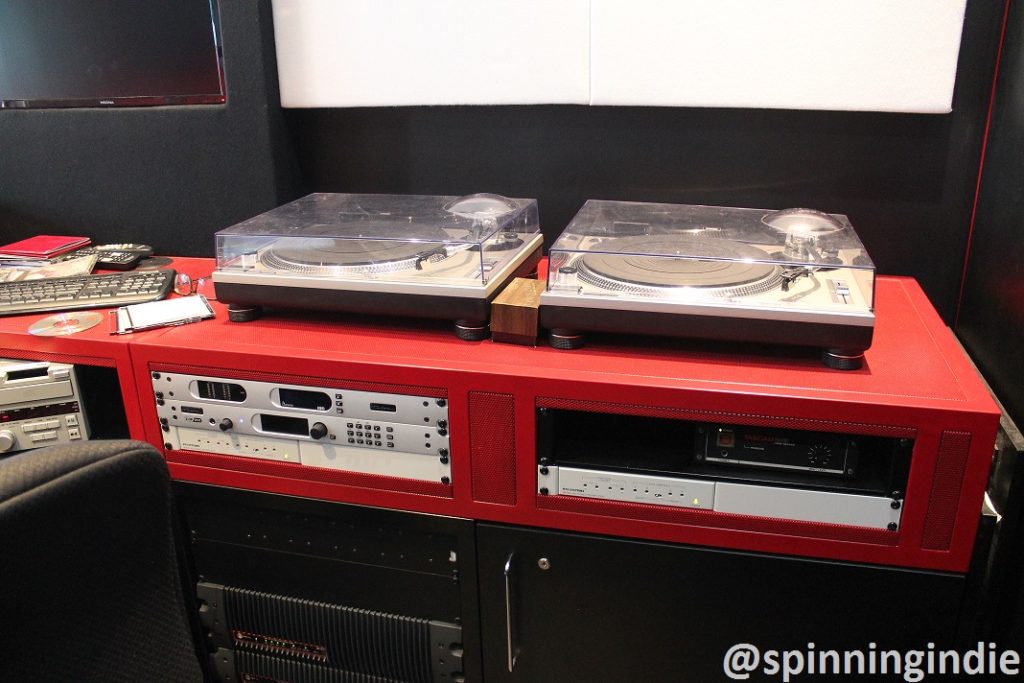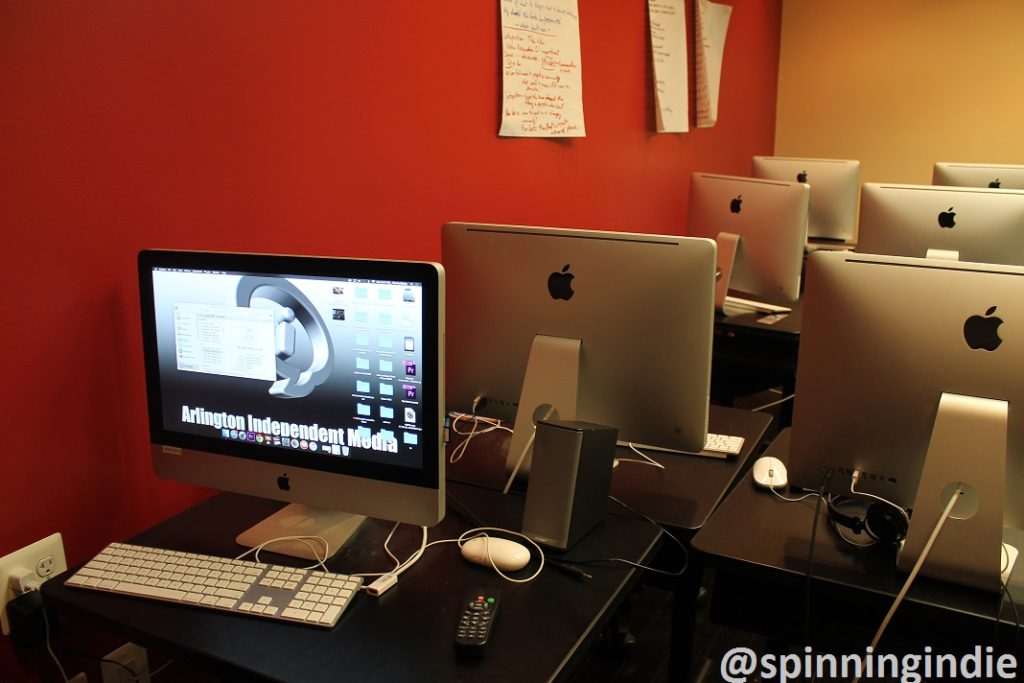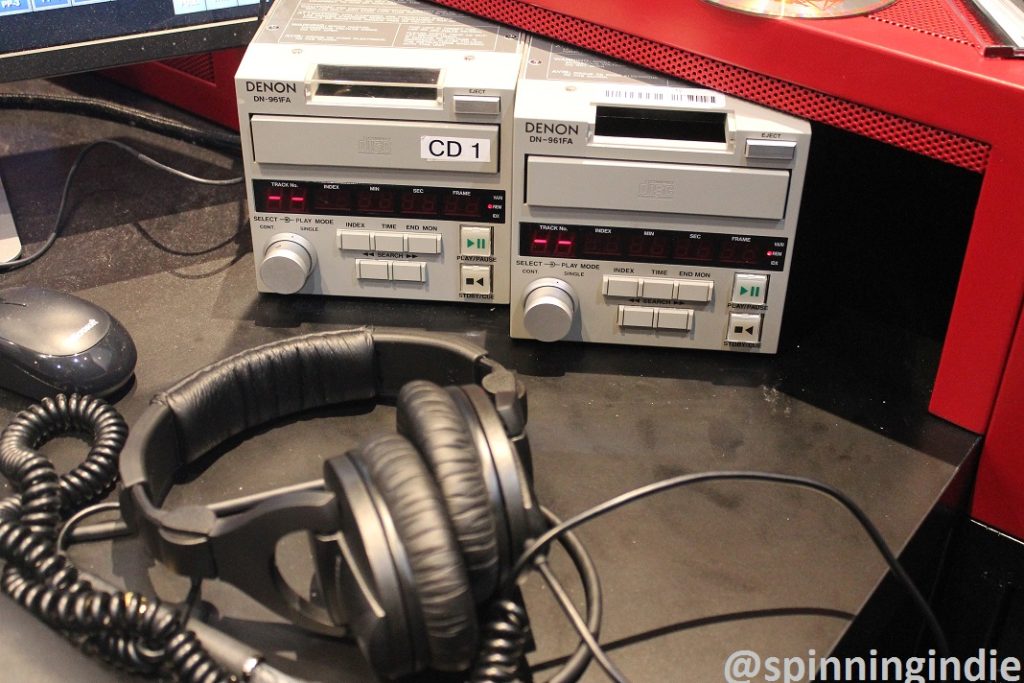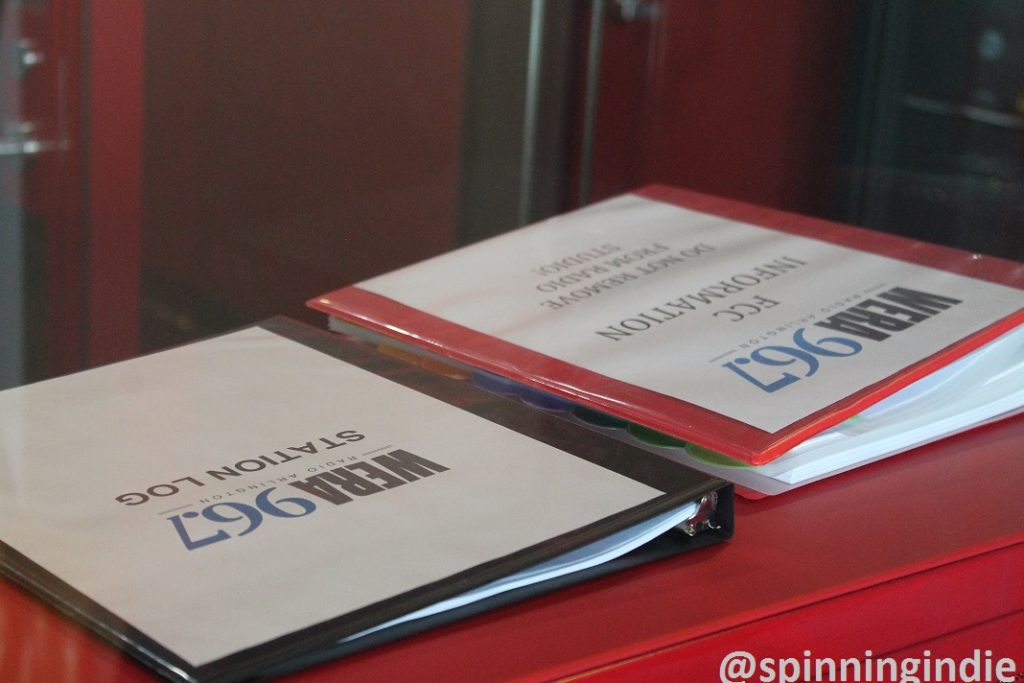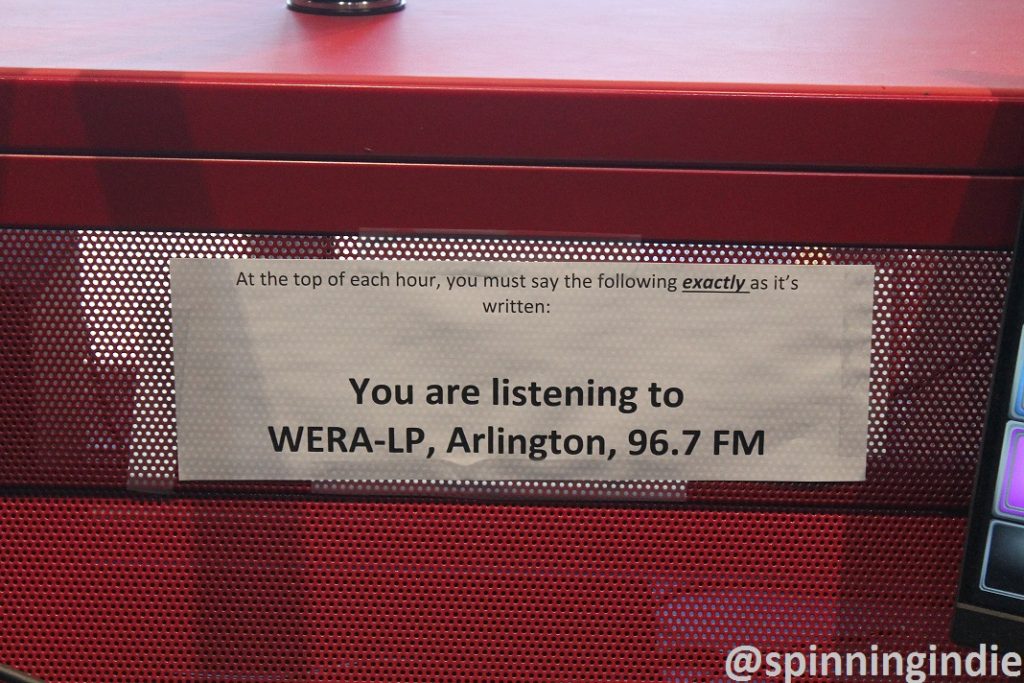My next stop on my grand radio tour in the Washington, D.C. area was to low power FM (LPFM) community radio station Radio Arlington (WERA-LP) in Arlington, Virginia. A project of Arlington Independent Media (AIM), the station launched over 96.7 FM in December, 2015, just a few months prior to my visit on February 28, 2016.
My friend Kyle Barnett (he’s the adviser for the Bellarmine College radio station in Louisville, Kentucky – see my station tour here) tagged along with me as I took the Metro from Washington, D.C. to Arlington. On a sunny Sunday morning (a welcome relief after some cold and stormy days), we walked past the brunch crowds in the quaint Clarendon neighborhood of Arlington County, just five miles from D.C.
When we arrived at Arlington Independent Media, we were greeted by Executive Director Paul LeValley, Operations Manager Lauree McArdle and Board Member Andy Rosenberg (who had invited me to visit Radio Arlington). Throughout our visit, AIM members were working in various work spaces and studios. A membership-based organization, AIM offers production training, production studios, runs the Rosebud Film Festival and is home to a public access cable television station in addition to WERA-LP.
LeValley told me that AIM started out in 1982 as a public access television provider, Arlington Community Television, on George Mason University’s Arlington campus. By 1998, it had moved to the current location and LeValley said they’ve been “renovating ever since.” The facility has many spaces that can be used by members, including a spacious lobby, kitchen, large warehouse, conference room, green room, classroom, TV studio, electronic classroom, editing booths, audio production suite, project room, and radio studio.
As we toured through the space, we quietly walked by as a crew was producing the all-female science fiction television show Star Crash. Down the hall, members of the radio production class worked in the radio studio. Between December and the end of February, approximately 100 volunteers had received radio training at WERA-LP. The frequent classes at one point were taking place daily. Paul said, “every day we’re teaching somebody something.”
When I visited there were around five students in the studio getting trained, so the station was running on automation. A live DJ was scheduled to come in following the class. While the students were on a short break, we popped into the studio to take a quick look. The shiny room has eye-catching red accents on the furniture and is outfitted with a mixing board, microphones, two turntables, two CD players, a computer, and several monitors. The front wall of the booth is a glass window that overlooks the lobby, with a view out to the front window of the building. Although AIM is a bit tucked away on a side street (it overlooks parking spaces), I was told that they do occasionally get some walk-in visitors. If one is standing in the parking spaces out front, it’s possible to catch a glimpse of the on-air DJ.
While touring the rest of the space, I saw signs of the radio station, including some hand-made decorations that were used in a recent neighborhood Mardi Gras parade. AIM had its own van/float that was adorned with whimsical promotional pieces related to its various projects, including a radio show devoted to BBQ called The Smokehouse.
A portable radio in the warehouse can be used to monitor the station’s air sound. A small collection of CDs are housed nearby, but they are actually used by the television station. WERA-LP does own some physical music, but they don’t have the space to store it. McArdle told me that they are getting most of their music digitally and a volunteer has been sorting through submissions. She added, “space is a challenge here.”
At the time of my visit, approximately fifty percent of WERA-LP’s schedule was made up of live programming, with the remainder pre-recorded shows. McArdle, who ran her college radio station WLFR at Stockton State in New Jersey, said that she prefers doing a live show and thinks it’s easier than pre-recording a show. “When you go live, that’s it…warts and all…That’s what makes it real,” she explained. Rosenberg also has a college radio past at Northwestern University’s college radio station WNUR (see my station tour here) and actually got his start there during a summer institute for high school students.
After a quick tour, Barnett headed out and I walked into town for lunch with LeValley and Rosenberg. During our wide-ranging discussion about radio, they also gave me more of the back-story on WERA-LP and how the first few months of broadcasting had been. Rosenberg shared that they’ve been “deluged with proposals” and LeValley added, “we’ve approved over 80 programs.” Live shows can take place from 9am to 10pm on weekdays and from 10am to 8pm on weekends and that schedule in based on when AIM’s building is open. They were trying to figure out ways for volunteers to do shows after hours as well, but for the time being, pre-recorded shows or automation fill the slots during late night and early morning hours. A Program Advisory and Review Council evaluates proposals and also ensures that all producers have signed a program contract.
Everyone with a show at WERA-LP must be a member of AIM, which costs $25 a year. Additionally, hosts need to go through training, including a 3-hour community media class and an operations/FCC class (9 to 10 hours total, which can happen in weekly sessions or during a 2-day weekend training). I asked if kids or teenagers were participating yet and was told that they certainly could. Kids have always been involved with the AIM television station and those under 12 just need to be accompanied by a parent. Rosenberg noted, “Kids are so fearless…and they have brilliant ideas.” He told me, “we want to encourage that kind of participation” and that there has already been some outreach to a nearby school and some teens are interested in doing a show.
As far as response to the new station, LeValley said that “90% of the feedback has been very positive.” Some listeners have told them that, “I’ve been waiting for this for years.” At the time of my visit, the station was airing mostly pop music, with some other shows sprinkled in, including classical, jazz, rockabilly, and a Spanish-language show. It was expected that as more djs were trained, the schedule would expand and diversify. In general, though, LeValley described the station as “radio by and for the Arlington community.”
Like Marika Partridge at nearby Takoma Radio (see my tour here), Rosenberg said that he hoped for future collaborations with other stations and suggested gathering together a consortium of LPFM stations for a seminar. McArdle added that even just networking with other stations would be great. There was also talk of sharing some programming with Takoma Radio, including a folk music show that may air simultaneously on both stations.
Looking at the WERA-LP schedule and program list several months after my visit, it’s clear that things have expanded. Programming fills pretty much the entire day from around 7am to 1am, with a variety of talk and music shows. Some of the genres represented include folk, classical, world, drum & bass, punk, funk, jazz, metal, reggae, film music, and indie/underground sounds. Talk shows are also wide-ranging, focusing on local news and residents, female business owners, dealing with disability, the DC tech scene, the Latino community, comics & sci-fi, and one about female and non-binary individuals in the music industry.
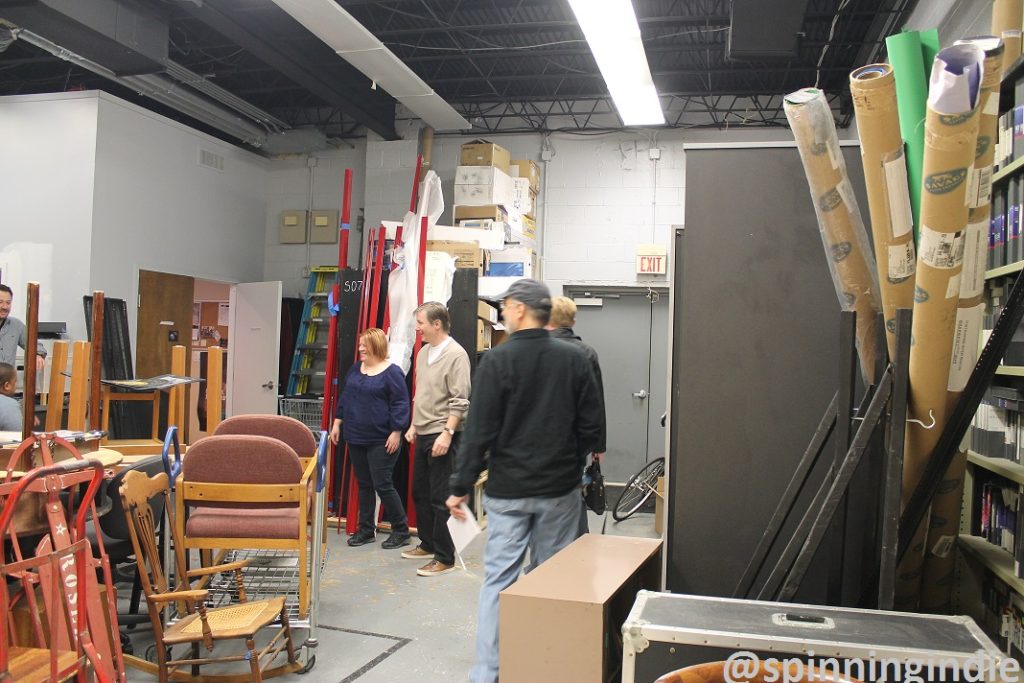
L to R: Lauree McArdle, Paul LeValley, Kyle Barnett and Andy Rosenberg (in cap) in warehouse at Arlington Independent Media. Photo: J. Waits
My trip to D.C. drew to a close at the end of my visit to WERA-LP and LeValley offered to give me a ride to the airport, which isn’t far from the station. We listened to the station in the car and heard a promotional spot featuring his voice. I asked him if it felt weird to hear his voice on the radio and he said it did initially, but that he’s used to it, adding, “Everything about it has been fun.” He also clued me in to their choice of call letters. They really wanted WAIM or WAIR, but those call letters were already taken by nearby full power stations. They ended up choosing WERA as it could stand for “We Are Arlington.”
En route he also reflected back on the launch of the station back in December, saying that they had planned to air station members singing along to “This Land is Your Land.” The huge assembled crowd with hundreds of people was so loud that by the time the station launched at 6pm on December 6, 2015, he was unable to actually hear if the station was on the air. He joked, “We counted down. 5, 4, 3, 2, 1, 0…it was so loud in there…I couldn’t hear whether or not it actually went on. And there was this moment of horrible panic of ‘oh my god, what if we did all this and it didn’t work?’ Because how would I know. But, it worked. We went on the air live and we’ve been on ever since.”
Thanks so much to Andy Rosenberg, Paul LeValley, and Lauree McArdle for taking the time to speak with me and show me around the station on a Sunday. This is my final radio station field trip report from my February East Coast tour. In the coming weeks I will share additional radio station tours from Chicago and from Southern California. This is my 104th station tour report. See my most recent field trips on Radio Survivor and see a full list of my station tour reports on Spinning Indie. September 13 update: Hear more about this visit on Radio Survivor Podcast #57, which also includes audio from my interview with LeValley.

